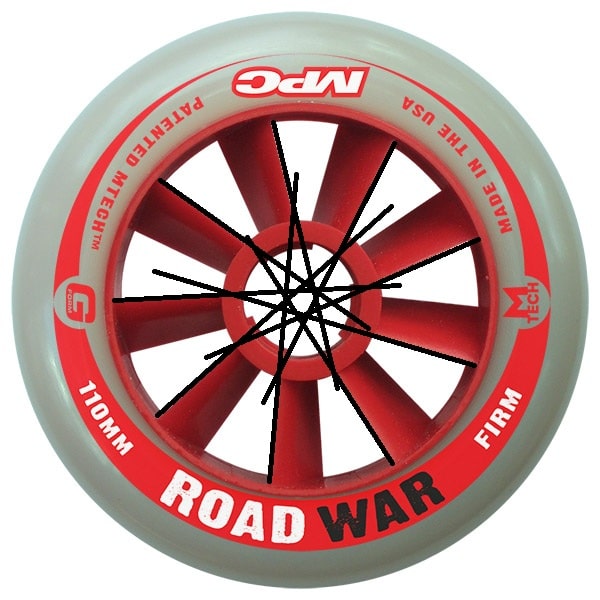Technical description of the MPC Turbo speed skating wheels
Par alfathor |
Publié le 5 June 2012 |
Mis à jour le 3 November 2020 |
Catégories :
Speed-skating
All
All
Speed-skating
| Sous-catégories :
how to choose your roller-skates and inline skates
how to choose your roller-skates and inline skates
| 12394
| Tags :
Yann Guyader
mpc Wheels
MPC Turbo
MPC wheels description
mpc speed skating wheels
After a lackluster year and a half with lots of breakage problems, MPC is back in the news with reworked speed skating wheels. Explanation of the changes that have been brought to the existing models by Yann Guyader…
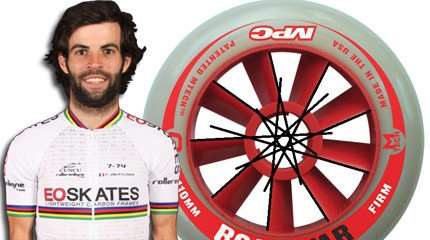
Analysis by Yann Guyader
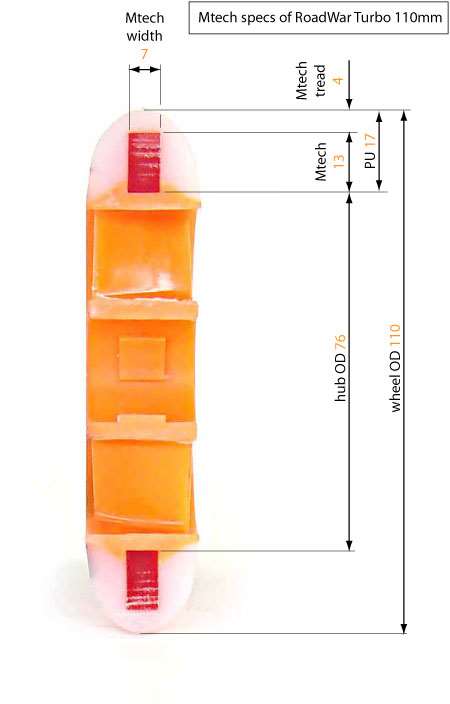 The new MPC Turbo wheels show major developments both in the core and the on-core. The design remains the same on the whole, with three main parts:
The new MPC Turbo wheels show major developments both in the core and the on-core. The design remains the same on the whole, with three main parts:
- The outer on-core made of hard polyurethane
- The inside ‘M-Tech ring’ made of softer polyurethane
- The core with spokes twisted in the shape of blades.
The idea was to take up all the elements that made such an example of the MPC wheel that all the other great brands of the market copied its bi-hardness M-Tech technology. This new product of the MPC Speed range is more of an optimization of the previous version than a revolution, even if the wheel has been improved in depth.
Particular efforts have been brought to the design of the wheel in order to make it even faster, but also more multipurpose and above all more resistant, especially on road.
Changes and characteristics of the new on-core
The M-Tech technology was reworked in the perspective of improving even more the characteristic ‘snap’ of the MPC wheel.
The first improvement comes from a different on-core, especially the inside M-Tech strip which has been widened and softened for two reasons:
1) In widening the M-Tech strip, MPC improved the flexibility of the wheel at the on-core level during the propulsion which are very hard on the polyurethane, especially when taking bends. The M-Tech strip being bigger, the ‘snap’ of the wheel is bigger too.
The reactivity of the wheel is better and enables to improve the mechanical grip of the latter during pressure phases in bends and both in lateral and straight pushes, which improves the general propulsion.
Then you can generate more speed without having to push harder. The effects can be felt on the exit of bends where the start of the straight line is easier.
2) The change of the characteristics of the M-Tech strip also enables to increase the hardness of the outer polyurethane. The M-tech strip being wider and softer, the hardness of the outer strip can be higher without losing in rolling comfort, even when you skate on damaged grounds, and without affecting the rebound qualities.
Moreover, this harder polyurethane improves the rolling and reduces the premature abrasion phenomenon that was often noticed on the previous versions. All these components enable the new Road War Turbo wheels to be much more multipurpose than the previous ones, which were more destined to a track use.
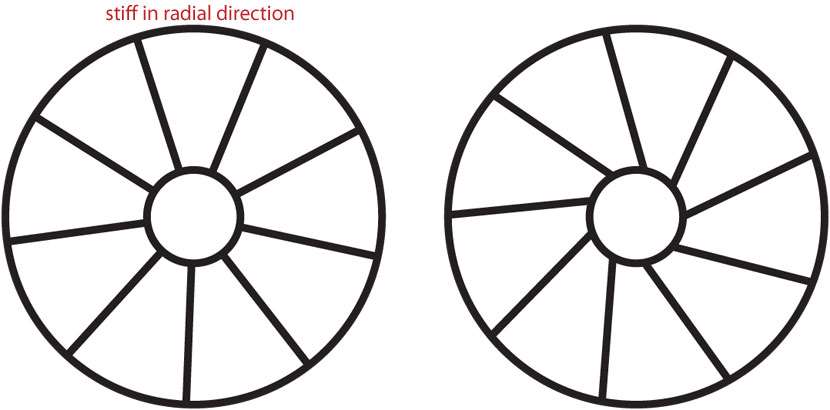
A new core design
The design of the core has changed too and was the subject of a deep study. Its conception was made with great care, after the problems of breakage met on some of the past versions.
MPC did their best to make the core more resistant, without changing their philosophy and the core’s qualities of flexibility.
The diameter of the core is the same (72 mm), which enables the wheel to be lighter than the competition’s with a slightly thinner on-core.
1) The great development comes from the shape and the place of the different spokes of the core, still twisted which provides this characteristic propeller shape. The place of the spokes has been corrected: they were tangent on the last version while now they are radial.
The spokes being radial, they are thus shorter than on the previous version, which leads to a loss of weight. The radial implantation, as another consequence, reduces shear stress at the joint with the on-core, hence the core is more reliable. This new design does not affect the response of the core on bends or during push phases as the spokes are still twisted, which enables to keep an excellent ‘pop’.
It also enables to rigidify the core and thus to make the wheel even more reactive. A more rigid core also means more stress on the polyurethane. And as the inside M-Tech strip is bigger, the ‘snap’ is bigger too. These are two supplementary effects which contribute to improve the efficiency of the propulsion.
2) The second change lies in the width of the spokes. They have been widened too, in order to avoid breakage phenomena of course. But it also made the wheel more efficient, especially on road, as it noticeably increased the rolling.
|
|
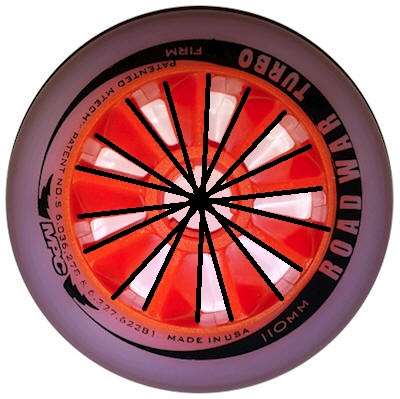 |
Glossary
Snap: Speed at which the on-core returns to its initial shape after the push phase.
Pop: Very similar to the snap, the pop is the return of distortion of the core, which still undergoes the same stress as the on-core, even if it is less distorted than the latter.
The snap and the pop are thus measurements of restitution of the energy gained during the return of the wheel to its initial shape.
Rolling: A word that seems very simple and yet it is very technical. Everybody knows that too soft a wheel gives the feeling of being stuck to the ground. On the other hand, it does not mean that the harder the wheel, the better the rolling. Indeed, a wheel should keep a minimum of flexibility in order to absorb all the little bumps of the road. Too hard a wheel will tend to ‘dribble’, i.e. it will hop more than it will roll. You have to find the good compromise in order to, once more, get the best propulsion.
Useful Links
Test: 2011 110 mm MPC Road War Firm Wheels
Test: 100 mm MPC Road War Wheels
Translated by Close Yr E’s
Photos: Yann Guyader, MPC, Alfathor
Auteur
Alexandre Chartier
''alfathor''
Alexandre est le fondateur et webmaster de rollerenligne.com depuis 2003. C'est un passionné de roller en général, tant en patin traditionnel qu'en roller en ligne. Il aime le patinage à roulettes sous tous ses aspects : histoire, économie, sociologie, évolution technologique... Aspirine et/ou café recommandés si vous abordez un de ces sujets !

